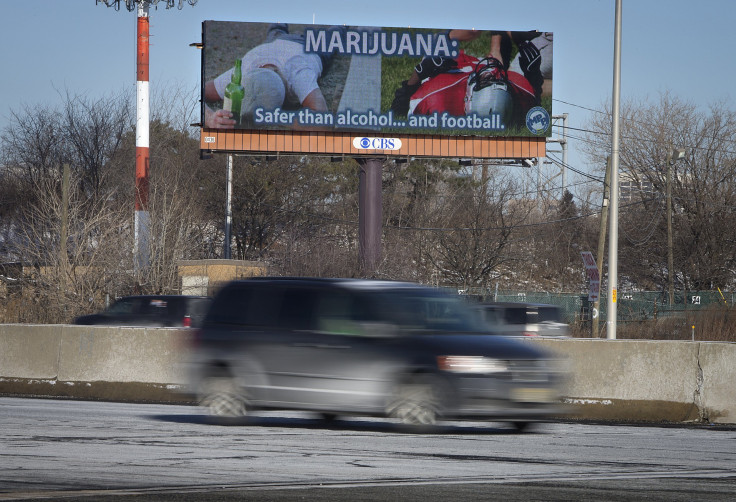Driving While High On Weed: New App Could Allow Marijuana Users To Monitor Sobriety From Their Smartphones

Researchers have created a smartphone app that could help determine whether someone is too high to get behind the wheel and would allow police to identify impaired drivers, an important development for law enforcement and marijuana consumers alike as more states move toward full marijuana legalization. The app, developed by researchers from Arizona State University in Tempe, Arizona, uses high-speed cameras to detect involuntary, jerk-like eye movements associated with marijuana use, according to the State Press. The technology was unveiled earlier this month.
The app could be downloaded to most smartphones and tablets, giving marijuana users an easy way to monitor their own sobriety, said the researchers. Users would stare into their phone’s camera -- or the phone of a police officer – and the technology would measure the saccades, or tiny movements, of their eyes. It's similar to a field sobriety test, where a police officer measures a driver’s saccades by having him follow an object like a pen or penlight with his eyes.
“It’s a noninvasive test that employs a proven technology that is currently being used to diagnose neurological disease,” Richard Dale, executive director of ASU’s Center for Emergency Management and Homeland Security, said in a statement. “All the pieces are in place, and this is an ideal time to move this technology into greater use…We are talking to potential partners to help us take the next step.”
In 2013, nearly 10 million Americans age 12 and older said they had driven under the influence of illegal drugs, according to the 2013 National Survey on Drug Use and Health. Marijuana was found to be the second-most-common substance associated with impaired driving after alcohol. By some estimates, some 4 percent to 14 percent of car accidents in the U.S. that resulted in injury or death involved drivers who tested positive for marijuana.
As states increasingly move toward legalizing marijuana for recreational use, questions have surfaced regarding what constitutes impaired driving and how to measure it. A simple blood test can detect the level of marijuana in a person’s system, but that doesn’t help law enforcement in the field who need an on-site method of determining whether someone is impaired.
“It is about awareness, education and deterrence,” Richard Besserman, who was part of the research team that developed the new impaired driving app, said in a statement. “Similar to breathalyzers and alcohol, this technology has the potential to be just as useful to individuals, law enforcement and the judicial community.”
© Copyright IBTimes 2025. All rights reserved.






















